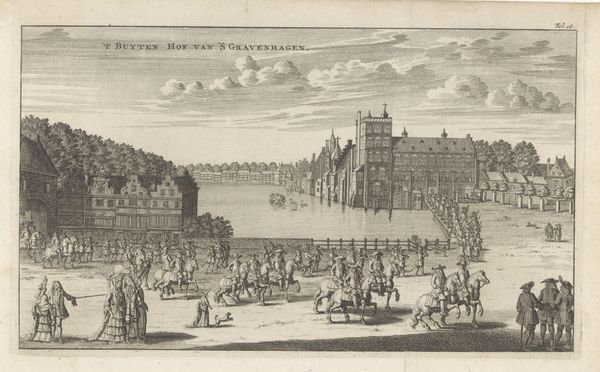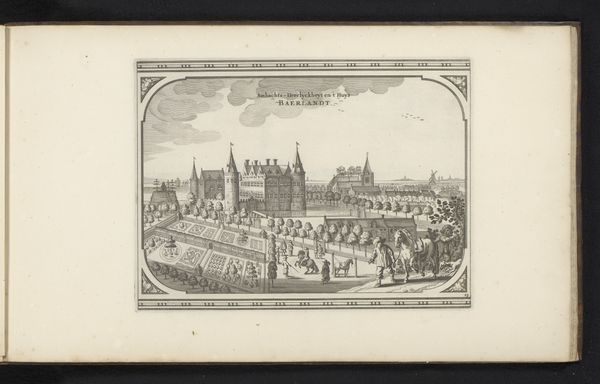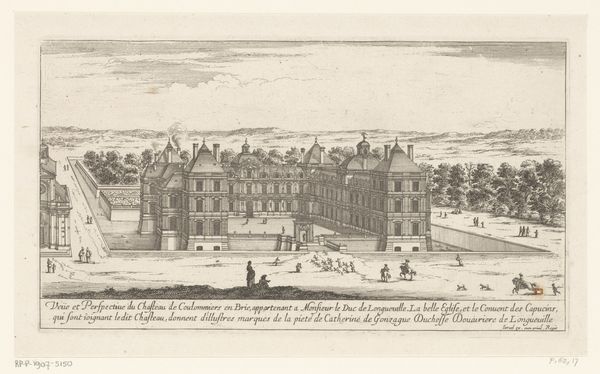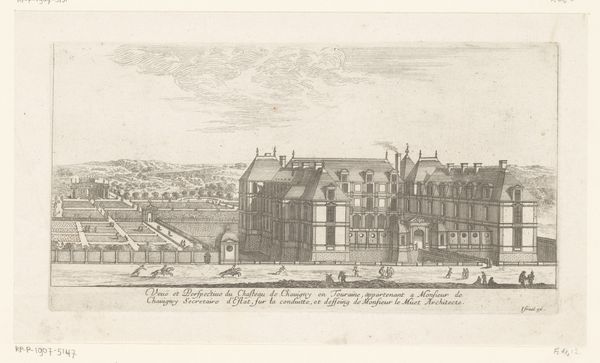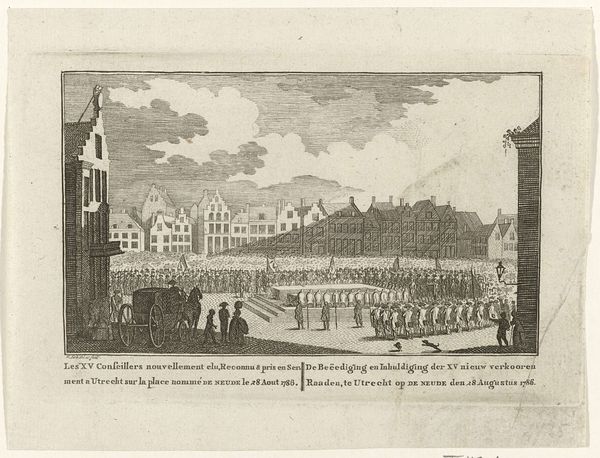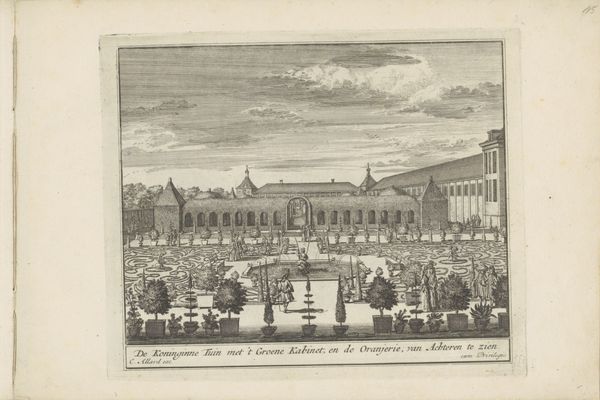
print, etching, engraving
#
dutch-golden-age
#
ink paper printed
# print
#
etching
#
pencil sketch
#
old engraving style
#
landscape
#
cityscape
#
engraving
#
realism
Dimensions: height 209 mm, width 270 mm
Copyright: Rijks Museum: Open Domain
Editor: This is "Gezicht op Ellewoutsdijk," a print made with ink on paper somewhere between 1657 and 1725, attributed to Pieter Hendricksz. Schut. It's interesting how the lines create a sense of depth, and you can almost feel the textures of the buildings and the landscape. I'm curious, what can you tell me about it from a materialist perspective? Curator: This print immediately directs my attention to the social implications embedded in its very production. We must consider the labour involved in creating the paper, the inks, and the printing press itself. These materials were not simply "there"; they represent systems of extraction, manufacture, and distribution. Think about the skilled artisans who engraved the image, each line a testament to their specific training and economic status within 17th-century Dutch society. Editor: So, you're suggesting the materials used reflect the social context in which it was made? Curator: Precisely! The use of printmaking allowed for wider dissemination of images, influencing how landscapes and places were perceived and consumed by different social classes. How did images like these contribute to the rise of a Dutch national identity and potentially fuel colonial ambitions? Were these widely distributed or limited to elite circles? Editor: That’s fascinating. I hadn’t considered how the means of production could tell us so much about its purpose and impact. It's almost like looking at the print as a commodity, reflecting its own economic and social footprint. Curator: Exactly! By looking at the materials and their origins, we can unpack complex networks of power, labor, and consumption that shaped not only the art, but also the society that produced it. I am glad we both now appreciate it.
Comments
No comments
Be the first to comment and join the conversation on the ultimate creative platform.
